Best Crafts for Kids to Foster their Creativity
In a world brimming with screens and digital distractions, it's essential to nurture the innate creativity of our children. Crafting is not just a pastime; it’s a gateway to imagination and self-expression. Engaging in crafts allows kids to explore their thoughts and feelings while developing essential skills that will serve them well throughout their lives. Whether it’s through painting, building, or repurposing everyday items, the act of creating something from scratch can be incredibly fulfilling. So, let’s dive into some of the best crafts that can inspire young minds and keep their creative juices flowing!
Crafting isn’t merely about making pretty things; it’s about the process of creation itself. When kids engage in crafts, they learn to think critically and solve problems. For instance, when faced with a project, they must decide which materials to use, how to assemble them, and what techniques will yield the best results. These decisions encourage critical thinking and decision-making skills. Moreover, the joy of seeing a completed project boosts their confidence and encourages them to take on new challenges.
Let’s not forget the social aspect of crafting! When kids work together on projects, they learn to share ideas, collaborate, and communicate effectively. This interaction can lead to lasting friendships and help develop vital social skills. Imagine a group of kids sitting around a table, glue and glitter in hand, laughing and sharing stories as they create their masterpieces. It’s moments like these that foster not just creativity but also a sense of community.
Now, you might be wondering, what types of crafts are best for different age groups? Well, the beauty of crafting is that there’s something for everyone! From simple finger painting for toddlers to intricate DIY projects for older kids, the options are endless. Here’s a quick breakdown of some popular craft categories:
| Age Group | Craft Ideas |
|---|---|
| Toddlers | Finger painting, nature collages, and simple clay modeling |
| Preschoolers | Paper plate masks, easy origami, and simple sewing projects |
| School-aged Kids | DIY gifts, recycled crafts, and painting on canvas |
| Teens | Advanced sewing, jewelry making, and digital art |
As you can see, crafting can cater to various age groups, ensuring that every child finds an outlet for their creativity. The best part? Many of these projects can be done with materials you already have at home, making them accessible and convenient. So, what are you waiting for? Grab some supplies and let the crafting adventures begin!
- What age is appropriate for crafting? Crafting can start as early as toddler age, with simple projects that are safe and engaging.
- How can crafting benefit my child? Crafting promotes fine motor skills, boosts creativity, and enhances self-esteem.
- Do I need special materials for crafting? Not at all! Many crafts can be made using everyday household items.
- Can crafting be a solo activity? Yes, while crafting can be social, many kids also enjoy crafting alone as a form of personal expression.
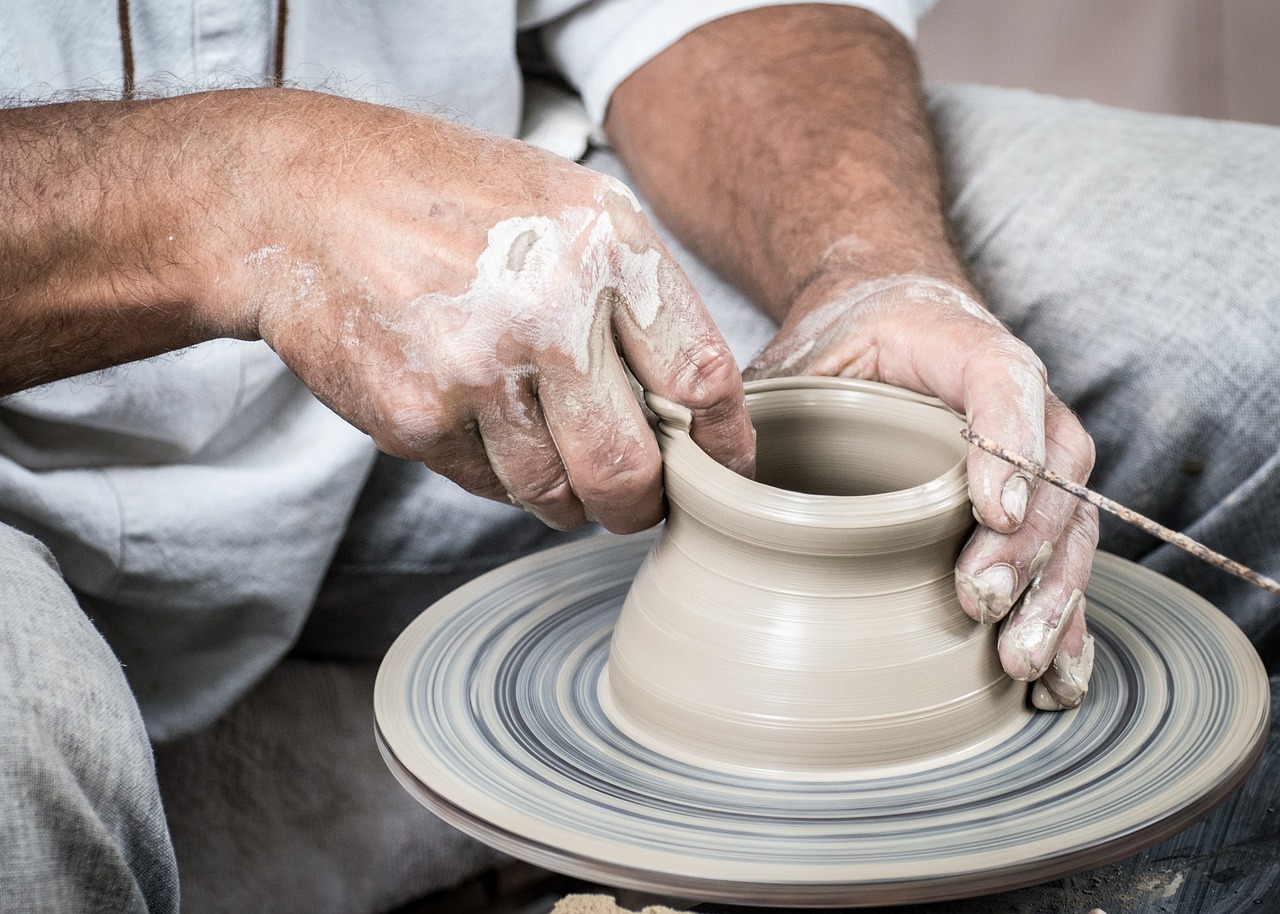
Benefits of Crafting for Kids
Crafting is not just about creating something beautiful; it’s a gateway to numerous developmental benefits for children. Engaging in craft activities can significantly enhance a child's fine motor skills, which are essential for tasks such as writing, buttoning shirts, and even using utensils. By manipulating various materials, children learn to control their hand movements, leading to improved coordination and dexterity. Imagine your child, with tiny fingers skillfully cutting, gluing, and painting—each action a step toward mastering their physical abilities!
Moreover, crafting is a fantastic way to boost creativity. When kids are given the freedom to create, they explore their imaginations without the constraints of rules. This open-ended play allows them to think outside the box, experimenting with colors, shapes, and textures. Just like a painter with a blank canvas, children can transform everyday items into masterpieces, fostering a sense of ownership and pride in their work. Isn’t it amazing how a simple piece of paper can turn into a dragon or a spaceship in their minds?
In addition to physical and creative benefits, crafting also plays a pivotal role in building self-esteem. Completing a craft project gives children a sense of accomplishment. They learn that their ideas matter and that they can bring them to life. This realization can boost their confidence and encourage them to take on new challenges, both in crafting and in other areas of life. Think of it as planting a seed of self-worth that will grow as they continue to create!
Furthermore, crafting can be a social activity. When children work together on projects, they learn essential skills such as teamwork, sharing, and communication. Whether it's a group project at school or a family craft night at home, these interactions help them develop strong relationships and improve their social skills. It’s like a mini-community where everyone contributes their unique ideas and talents.
To summarize, the benefits of crafting for kids are extensive and multifaceted. Here’s a quick overview:
| Benefit | Description |
|---|---|
| Fine Motor Skills | Enhances hand-eye coordination and dexterity through manipulation of materials. |
| Creativity | Encourages imaginative thinking and problem-solving through open-ended projects. |
| Self-Esteem | Builds confidence as children complete projects and express their ideas. |
| Social Skills | Promotes teamwork and communication through collaborative crafting activities. |
In conclusion, crafting is much more than just a fun pastime; it’s an enriching experience that contributes to a child's overall development. By providing children with opportunities to craft, we are not only nurturing their creativity but also equipping them with essential skills that will serve them throughout their lives. So, why not grab some supplies and start crafting today? Your little ones will thank you for it!

Easy Crafts for Toddlers
Toddlers are naturally curious and love to explore the world around them. Engaging them in hands-on activities is a fantastic way to spark their creativity while honing their fine motor skills. Crafting for toddlers should be simple, safe, and fun, allowing them to express themselves without feeling overwhelmed. Here are some delightful ideas that will keep your little ones entertained and foster their imagination!
One of the most exciting aspects of crafting with toddlers is the opportunity to use everyday materials. Items like paper, cardboard, and natural objects can transform into amazing creations with just a little bit of imagination. For instance, nature-inspired crafts can be a wonderful way to teach toddlers about the environment while they create. Using leaves, twigs, and pebbles, children can make unique artworks that celebrate the beauty of nature.
When it comes to nature-inspired crafts, the possibilities are endless! You can take a simple walk outside to collect materials or use what you have at home. Here are a couple of engaging activities:
- Leaf Prints: This is a classic craft that introduces toddlers to the beauty of nature. They can dip leaves in paint and press them onto paper, creating vibrant prints that showcase the intricate shapes and textures of leaves. It's a fantastic way for them to explore colors and patterns.
- Rock Painting: Transforming ordinary rocks into colorful masterpieces is another exciting activity. Kids can use acrylic paints to decorate rocks, turning them into ladybugs, monsters, or even abstract art. This craft not only encourages creativity but also allows them to explore their surroundings as they hunt for the perfect rocks.
Another fantastic avenue for toddler crafting is through seasonal crafts. These projects can help celebrate different times of the year and keep children engaged. For example, during autumn, toddlers can create pumpkin decorations using orange paper and green construction paper for the stems. In winter, they can make snowflake crafts using white paper and scissors, enhancing their scissor skills while having fun!
Remember, the key to successful crafting with toddlers is to keep it simple and enjoyable. Allow them to explore and express their creativity freely. Don't worry about the mess; it's all part of the fun! By engaging in these easy crafts, you’ll not only foster their creativity but also create lasting memories together.
Q: What materials are safe for toddlers to use in crafts?
A: Safe materials include non-toxic paints, child-safe scissors, paper, cardboard, fabric scraps, and natural items like leaves and rocks. Always supervise your toddler during crafting to ensure safety.
Q: How can I encourage my toddler to be creative while crafting?
A: Give them the freedom to choose their materials and let their imagination run wild. Ask open-ended questions about their creations to stimulate their thinking and encourage storytelling.
Q: How often should I do crafts with my toddler?
A: Crafting can be a daily or weekly activity, depending on your schedule. The important thing is to make it a fun and stress-free experience that your toddler looks forward to!
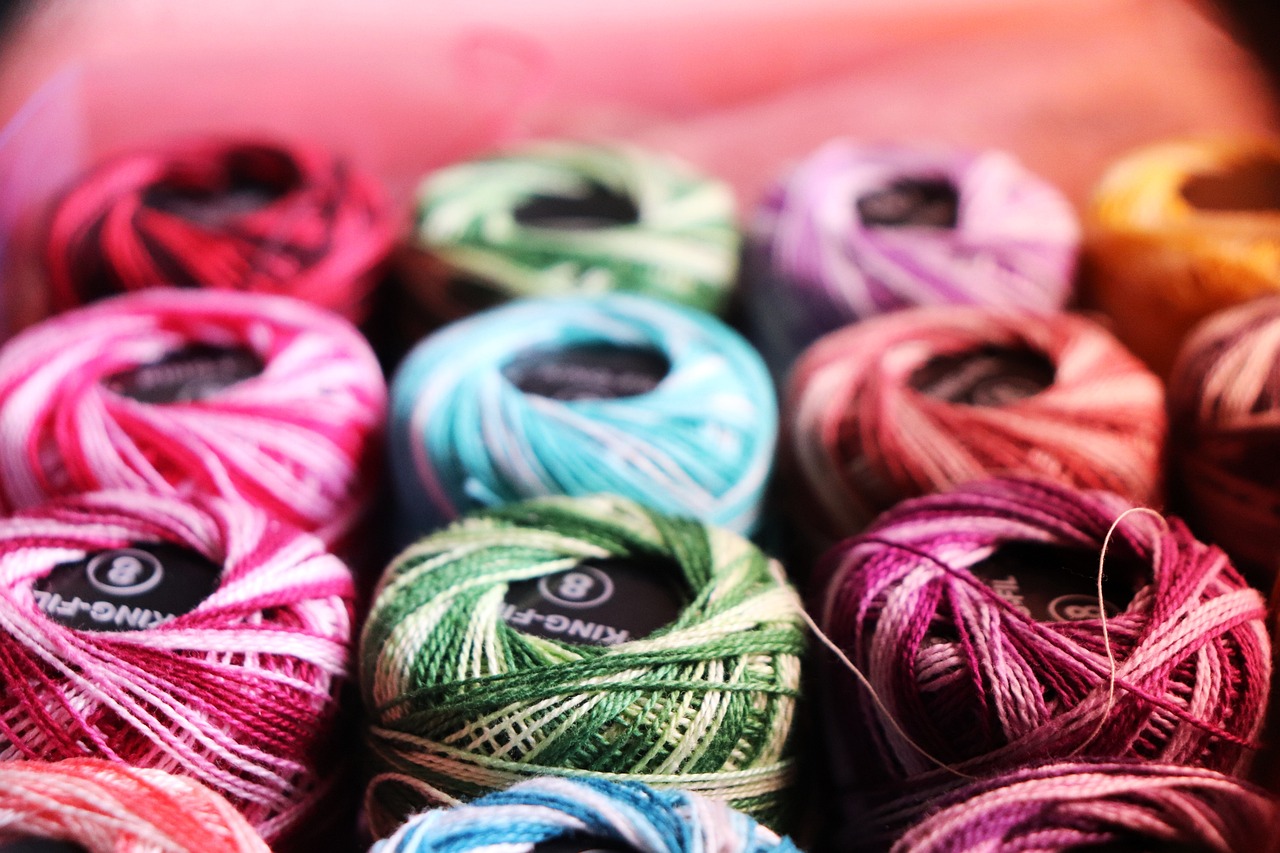
Nature-Inspired Crafts
When it comes to sparking creativity in children, nothing beats the great outdoors! Nature-inspired crafts not only allow kids to explore their environment but also encourage them to express their artistic side. Imagine your little ones running around the yard, collecting leaves, twigs, and stones, their minds buzzing with ideas on how to transform these natural treasures into beautiful works of art. This hands-on approach to crafting fosters a connection with nature that can last a lifetime. Plus, it’s a fantastic way to teach kids about the world around them while having a blast!
One of the most delightful aspects of nature-inspired crafts is their flexibility. You can tailor them to suit different age groups and skill levels, making them accessible for toddlers and school-aged children alike. For instance, toddlers can engage in simple activities like leaf printing, where they dip leaves in paint and press them onto paper, creating stunning patterns and designs. This not only introduces them to colors and shapes but also enhances their fine motor skills as they manipulate the leaves and paint.
As children grow, the complexity of the crafts can increase, allowing for more intricate projects. For example, older kids can take on rock painting, where they gather smooth stones and use acrylic paints to create vibrant designs. This activity not only encourages creativity but also teaches them about patience and planning as they visualize their designs before executing them. It’s fascinating to see how a plain rock can be transformed into a colorful ladybug or a whimsical monster, showcasing each child's unique imagination.
In addition to being fun, nature-inspired crafts can also serve as educational opportunities. Kids can learn about different types of leaves, flowers, and rocks, enhancing their understanding of the natural world. You could even turn it into a mini-science lesson by discussing the importance of trees, plants, and wildlife in our ecosystem. By integrating learning with crafting, you create a rich experience that nurtures both creativity and knowledge.
To get started with nature-inspired crafts, all you need are a few basic supplies and a willingness to explore. Here’s a quick guide to some essential materials that can enhance your crafting experience:
| Material | Use |
|---|---|
| Leaves | Leaf printing, collages |
| Stones | Rock painting, stacking games |
| Twigs | Building structures, nature wands |
| Flowers | Pressed flower art, floral arrangements |
So, gather your little crafters, head outside, and let nature be your guide! The possibilities are endless, and the joy of creating something beautiful from the wonders of the natural world is truly magical. Remember, crafting is not just about the end product; it’s about the journey of exploration and creativity that your children embark on along the way. So, what are you waiting for? Let’s get crafting!
Q: What age is appropriate for nature-inspired crafts?
A: Nature-inspired crafts can be adapted for all ages. Toddlers can enjoy simple activities, while older children can engage in more complex projects.
Q: What materials do I need for these crafts?
A: Basic materials include leaves, stones, twigs, and flowers. You can also use paint, glue, and paper to enhance the crafting experience.
Q: Can these crafts be done indoors?
A: While many nature-inspired crafts are best enjoyed outdoors, you can bring natural materials inside for crafting, making it possible to create regardless of the weather.

Leaf Prints
Leaf printing is not just a craft; it’s a delightful adventure that brings the beauty of nature right into your home! Imagine the joy on your toddler's face as they discover how to transform simple leaves into stunning pieces of art. This activity is perfect for little hands eager to explore the world around them while simultaneously nurturing their creative instincts. All you need are some leaves, non-toxic paint, and paper, making it an accessible project for parents and caregivers.
To get started, take a stroll outside with your child and collect a variety of leaves. Different shapes, sizes, and colors will make for a more interesting project. Once you have a selection, it’s time to bring them to life! Here’s a simple step-by-step guide to help you along the way:
- Gather Materials: You will need leaves, non-toxic paint (preferably in various colors), a paintbrush, and paper.
- Prepare the Workspace: Lay down some newspaper or an old tablecloth to protect your surfaces from paint spills.
- Paint the Leaves: Use the paintbrush to apply a thin layer of paint on one side of the leaf. Be sure to cover it evenly for the best print.
- Press and Print: Carefully place the painted side of the leaf onto the paper and press down gently. You can use your fingers or a clean roller to ensure it makes good contact.
- Reveal the Art: Slowly peel the leaf away to reveal the beautiful print! Repeat the process with different leaves and colors.
Leaf prints not only foster creativity but also teach children about the different types of leaves and their textures. This hands-on activity encourages observation and appreciation for the environment, making it a fantastic educational experience. Plus, once the prints are dry, they can be used to create greeting cards, decorations, or even framed art to adorn the walls of your home.
As a bonus, you can take this craft a step further by discussing the changing seasons with your child. Ask them questions like, “What colors do you see in the leaves?” or “How do you think trees prepare for winter?” This approach not only enhances the crafting experience but also encourages critical thinking and vocabulary development.
In summary, leaf printing is a simple yet captivating craft that can spark a love for nature and art in children. It’s an excellent way to spend quality time together while creating lasting memories and beautiful artworks. So grab those leaves and let the creativity flow!
Q: What types of leaves work best for printing?
A: Leaves with distinct shapes and veins, such as maple, oak, and ferns, tend to create the most interesting prints.
Q: Can I use any type of paint for leaf printing?
A: It’s best to use non-toxic, washable paints, especially for young children, to ensure safety and easy cleanup.
Q: How do I preserve the leaf prints once they're done?
A: Once your prints are dry, you can spray them with a clear sealant or frame them to protect and display your artwork.
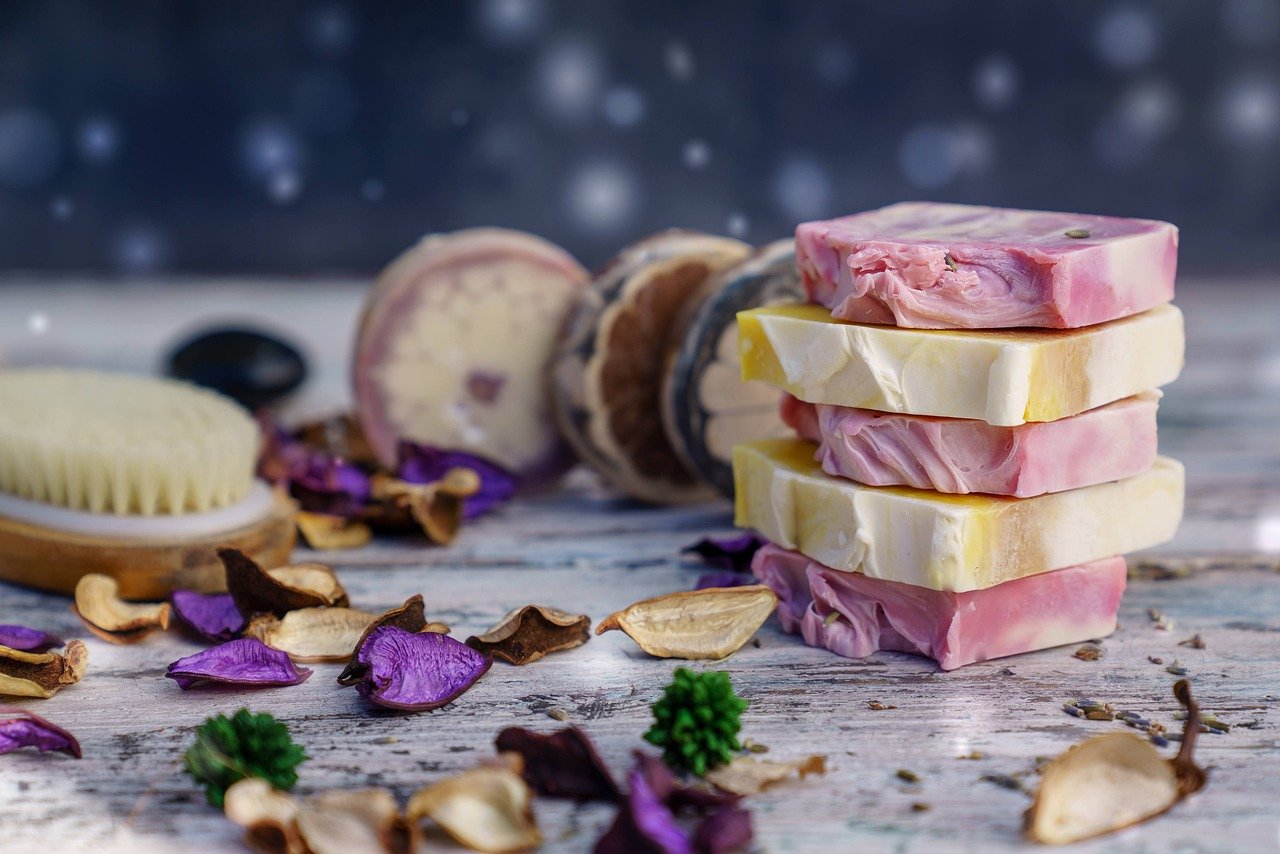
Rock Painting
Rock painting is not just a fun activity; it's an adventure waiting to happen! Imagine wandering around your backyard or a nearby park, picking up smooth stones that are just begging for a splash of color. This delightful craft allows children to tap into their imagination and transform ordinary rocks into extraordinary pieces of art. The best part? It’s incredibly simple and requires minimal supplies, making it perfect for little hands eager to create!
To get started with rock painting, all you need are some clean, dry rocks, a set of non-toxic acrylic paints, and a few paintbrushes. If you want to add a little more flair, consider using glitter or paint pens for finer details. The beauty of this craft lies in its versatility; children can paint anything from animals and flowers to abstract designs and inspirational quotes. The only limit is their imagination!
Here’s a quick guide on how to set up a rock painting session:
- Gather Materials: Collect rocks, paints, brushes, and sealant (if desired).
- Set Up a Workspace: Cover the table with newspaper or a plastic tablecloth to catch any spills.
- Get Creative: Encourage kids to sketch their designs on paper before painting them on the rocks.
- Seal the Art: Once the paint is dry, a clear sealant can protect the artwork from the elements if displayed outdoors.
Rock painting also serves as a wonderful opportunity for kids to learn about nature. While they search for rocks, they can discuss different types of stones and their textures. You can even turn it into a mini-science lesson about how rocks are formed! This combination of art and education makes rock painting a holistic activity that nurtures both creativity and knowledge.
Moreover, once the rocks are painted, they can be used for various purposes. Kids can create a garden of painted rocks, use them as unique paperweights, or even hide them around the neighborhood as part of a fun rock hunt. Imagine the joy on a friend's face when they stumble upon a beautifully painted rock with a positive message! It’s a simple way to spread joy and creativity in your community.
In conclusion, rock painting is not only a fantastic way for children to express themselves artistically, but it also fosters an appreciation for the natural world around them. So grab those rocks, unleash your creativity, and let the paint fly!
Q: What type of paint is best for rock painting?
A: Non-toxic acrylic paints are ideal for rock painting as they adhere well to stone surfaces and are safe for children.
Q: Do I need to seal the painted rocks?
A: Sealing the rocks with a clear sealant is recommended if they will be displayed outdoors, as it protects the artwork from weather damage.
Q: Can I use any type of rock for painting?
A: While you can use various types of rocks, smooth stones work best as they provide a nice surface for painting and are easier for young children to handle.
Q: Is rock painting suitable for all ages?
A: Absolutely! Rock painting can be enjoyed by children of all ages. Just be sure to supervise younger children with paint and small rocks to ensure safety.

Seasonal Crafts
Seasonal crafts are like a breath of fresh air for kids, allowing them to celebrate the changing seasons and holidays in a creative way. These projects not only keep children engaged but also help them learn about the world around them. Imagine the excitement on a child's face when they create something that represents the beauty of autumn leaves or the joy of spring flowers! Seasonal crafts can be simple yet impactful, making them perfect for kids of all ages.
For instance, during the fall, kids can gather colorful leaves and transform them into stunning decorations. It's a fantastic way to help them appreciate nature while honing their artistic skills. In winter, crafting snowflakes from paper can turn a dull day into a magical experience, as children watch their creations flutter down like real snow. Spring brings a plethora of opportunities, such as making flower crowns or painting flower pots, which can brighten up any garden or home. And let’s not forget summer; kids can create fun beach-themed crafts, like seashell collages or sand art, that capture the essence of their sunny adventures.
Here are a few ideas for seasonal crafts that you can try with your kids:
- Spring: Create colorful flower pots using paint and soil. Kids can plant seeds and watch them grow, connecting them with nature.
- Summer: Make a beach-themed collage using sand, shells, and pictures from summer vacations.
- Fall: Craft a beautiful wreath using dried leaves, twigs, and acorns collected during nature walks.
- Winter: Design snowflake decorations with paper and scissors, then hang them in windows to catch the light.
These crafts not only promote creativity but also serve as a wonderful opportunity for family bonding. Working together on seasonal projects can lead to delightful conversations and shared memories. Plus, they provide a chance for kids to express their feelings about each season, whether it's the joy of summer vacations or the coziness of winter holidays.
Overall, seasonal crafts are a fantastic way to keep children engaged and excited throughout the year. They encourage creativity, help develop fine motor skills, and allow kids to explore their feelings and thoughts about the changing world around them. So, gather your supplies and let the crafting begin!
Q: What materials do I need for seasonal crafts?
A: Basic materials include paper, scissors, glue, paints, and items from nature like leaves, flowers, and twigs. You can also use recycled materials like cardboard and plastic bottles.
Q: Are seasonal crafts suitable for all age groups?
A: Yes! While some crafts may be more suitable for certain age groups, many can be adapted to fit the skill level of different children.
Q: How can I encourage my child to be more creative during crafting?
A: Allow them to express their ideas freely. Provide a variety of materials and let them explore without strict guidelines. Celebrate their unique creations!
Q: Can crafting help with my child's development?
A: Absolutely! Crafting enhances fine motor skills, boosts creativity, and can improve problem-solving abilities. It also builds self-esteem as children complete their projects.
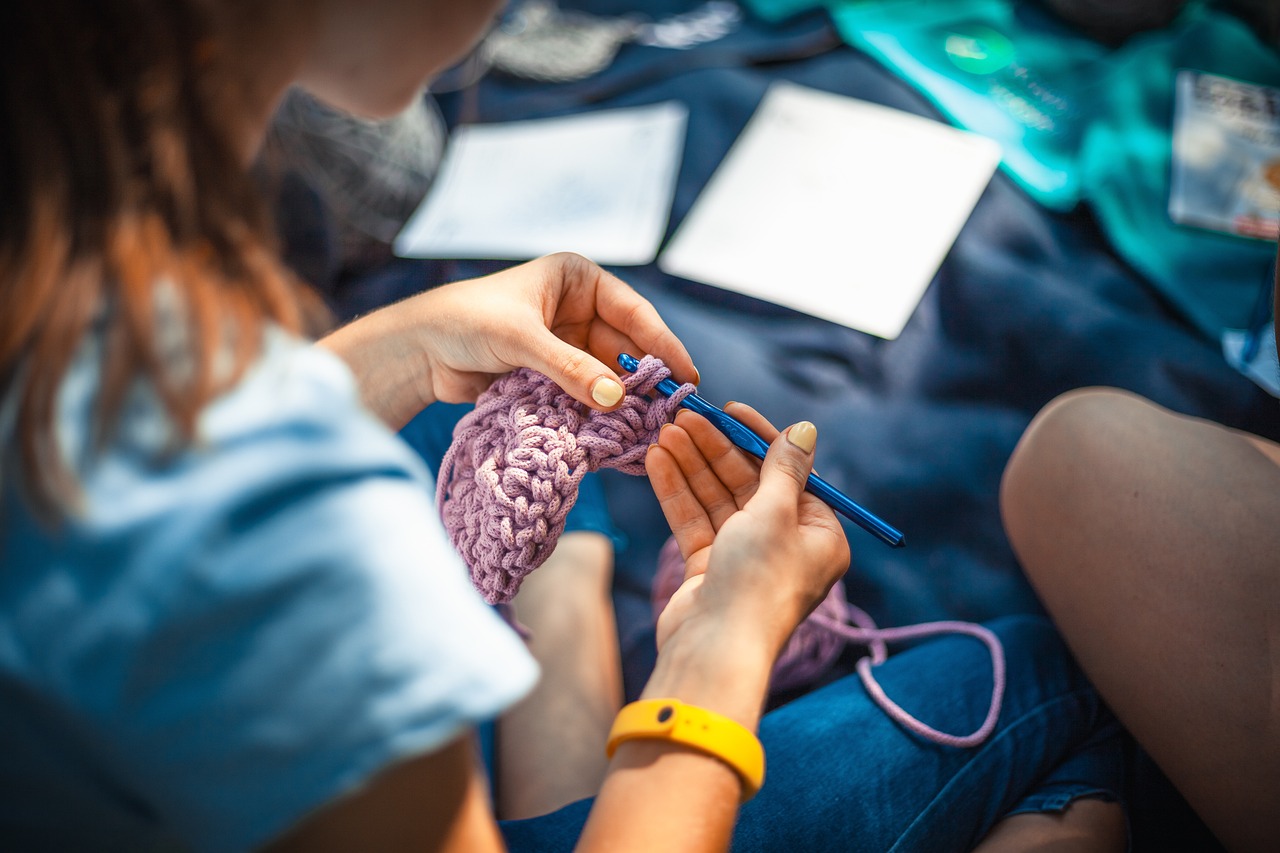
Crafts for School-Aged Children
As children grow, their creativity flourishes, and crafting becomes an exciting way for them to express themselves. School-aged children are at a stage where they can take on more complex projects that challenge their skills and ignite their imaginations. Crafting not only provides a platform for artistic expression but also encourages critical thinking and problem-solving. Imagine your child transforming a simple cardboard box into a magnificent castle or a quirky robot! These hands-on activities can be both educational and fun, offering a perfect blend of learning and play.
Engaging in crafts also allows children to explore various materials and techniques. For instance, they can experiment with different types of paint, textures, and tools, which enhances their sensory experiences. Furthermore, crafting projects can be tailored to fit any interest, whether your child is fascinated by nature, technology, or storytelling. The possibilities are endless! Here are some popular craft ideas that school-aged children will love:
- Recycled Materials Crafts: Using items like cardboard, plastic bottles, and old magazines, kids can create innovative projects that not only spark their creativity but also teach them the importance of recycling. For example, they can make a bird feeder from a milk jug or a decorative picture frame from cereal boxes.
- DIY Gifts: Crafting handmade gifts is a heartfelt way for children to connect with family and friends. Whether it's a hand-painted mug for Grandma or a friendship bracelet for a best buddy, these gifts carry a personal touch that store-bought items simply can't match. Kids learn to put thought into their creations, making each gift special.
Moreover, crafting can be a wonderful way to bond with family. Imagine setting up a crafting day where everyone participates—parents, siblings, and even grandparents! This not only creates cherished memories but also encourages teamwork and collaboration. Plus, it’s a fantastic opportunity for parents to teach their children about planning and executing a project from start to finish. They can discuss ideas, gather materials, and celebrate the final creations together.
To make things even more interesting, consider introducing themed crafting sessions based on holidays or special occasions. For example, during Halloween, children can create spooky decorations, while in spring, they can craft colorful flower pots. This not only keeps the crafting experience fresh and exciting but also allows kids to learn about different cultures and traditions through their art.
In conclusion, school-aged children have a wealth of opportunities to explore their creativity through crafting. By providing them with diverse materials and project ideas, you can help them develop essential skills while having a blast. So, gather those craft supplies, unleash their imaginations, and watch as they create masterpieces that reflect their unique personalities!
Q: What are some easy crafting materials to start with?
A: Some great starting materials include paper, scissors, glue, markers, and recycled items like cardboard and plastic containers. These materials are versatile and can be used for various projects.
Q: How can I encourage my child to be more creative with their crafts?
A: Encourage your child to explore different techniques and materials. Provide them with inspiration by showing them examples of crafts or taking them to craft fairs. Most importantly, give them the freedom to express themselves without fear of making mistakes.
Q: Are there any benefits to crafting beyond creativity?
A: Absolutely! Crafting can improve fine motor skills, enhance problem-solving abilities, and boost self-esteem as children complete projects. It also offers a great opportunity for social interaction when done in groups.
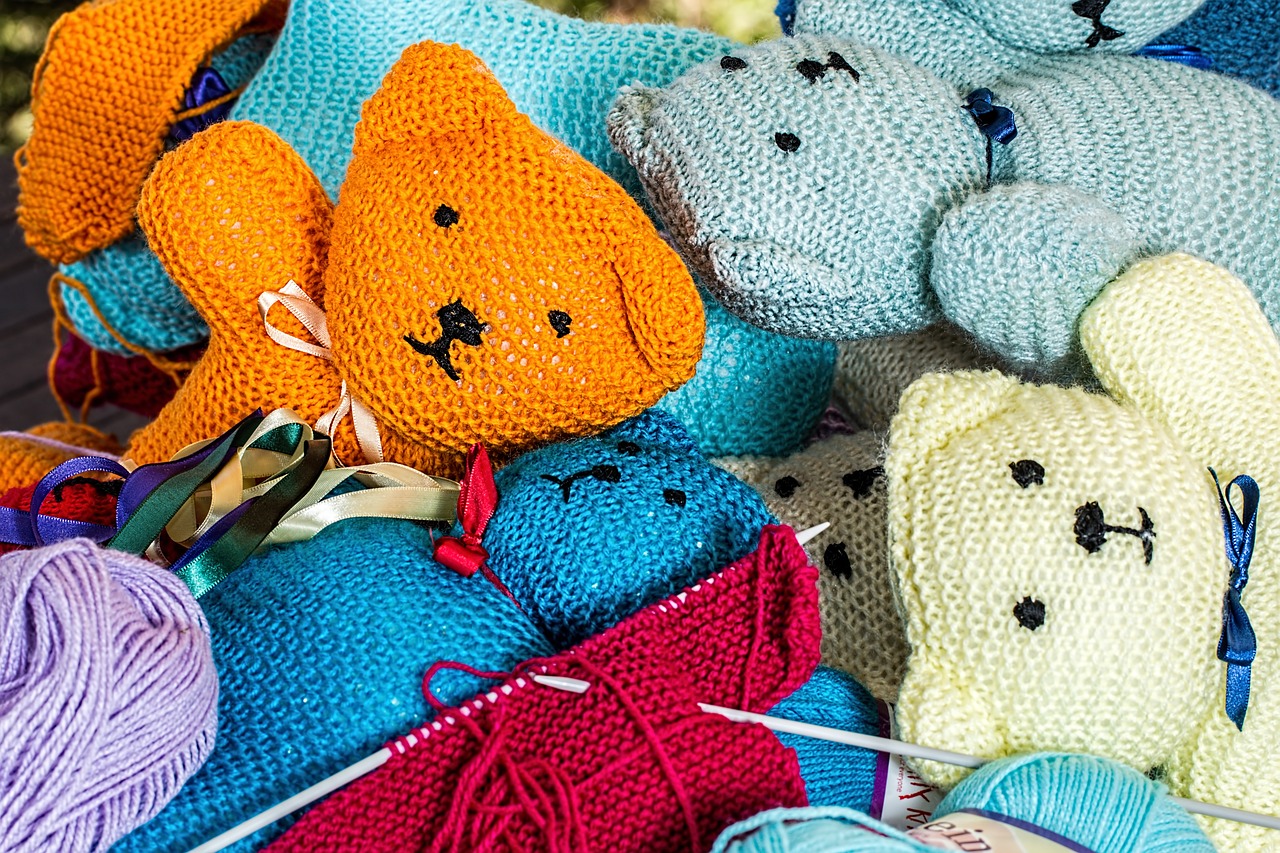
Recycled Materials Crafts
In a world where sustainability is becoming increasingly important, offer a brilliant opportunity for children to unleash their creativity while also learning about the environment. Imagine the delight on your child's face as they transform everyday items destined for the trash into stunning pieces of art! Not only does this stimulate their imagination, but it also instills a sense of responsibility towards our planet. So, what can you create with those old cardboard boxes, plastic bottles, and scraps of paper lying around the house? Let’s dive into some exciting ideas!
One of the simplest and most fun projects is creating cardboard box forts. Kids can use their imagination to design their very own castle or spaceship. All they need are some cardboard boxes, scissors (with adult supervision), and their creativity. They can paint, decorate, and even add furniture made from other recycled materials. This not only keeps them engaged for hours but also encourages teamwork if they involve siblings or friends.
Another fantastic project is making upcycled planters. Old tin cans or plastic bottles can be transformed into beautiful flower pots. Simply clean them out, paint them with bright colors, and let your child plant some seeds or small flowers. This project teaches kids about gardening and the joy of nurturing plants, all while giving new life to items that would otherwise be discarded.
For those who enjoy a bit of art, paper mache is a classic craft that utilizes old newspapers and magazines. Children can create anything from masks to bowls, allowing them to explore textures and shapes. The process of tearing the paper and layering it with glue is not only fun but also enhances their fine motor skills. Plus, the end result is often a unique piece of art that they can proudly display!
Here’s a quick table to summarize some engaging recycled materials crafts:
| Craft Idea | Materials Needed | Benefits |
|---|---|---|
| Cardboard Box Forts | Cardboard boxes, scissors, paint | Encourages imagination and teamwork |
| Upcycled Planters | Tin cans, plastic bottles, paint, soil, seeds | Teaches gardening and responsibility |
| Paper Mache Art | Old newspapers, glue, water, balloons | Enhances fine motor skills and creativity |
Incorporating these crafts into your child's routine not only makes for fantastic bonding time but also fills their day with learning. As they engage in these projects, they develop critical thinking skills and learn about the importance of reusing materials. Isn’t it wonderful to think that a simple plastic bottle can become a piece of art or a useful planter? So, gather those recycled materials and watch your child's creativity soar!
Q: What are some other recycled materials I can use for crafts?
A: You can use items like egg cartons, old clothes, bottle caps, and even old toys! The possibilities are endless.
Q: Are recycled crafts safe for young children?
A: Yes, as long as you supervise them, especially when using scissors or any sharp tools. Always ensure that the materials are clean and safe for handling.
Q: How can I encourage my child to be more creative with recycled materials?
A: Encourage them to think outside the box! Ask open-ended questions like, "What do you think we could make with this?" or "How can we use this item in a new way?"
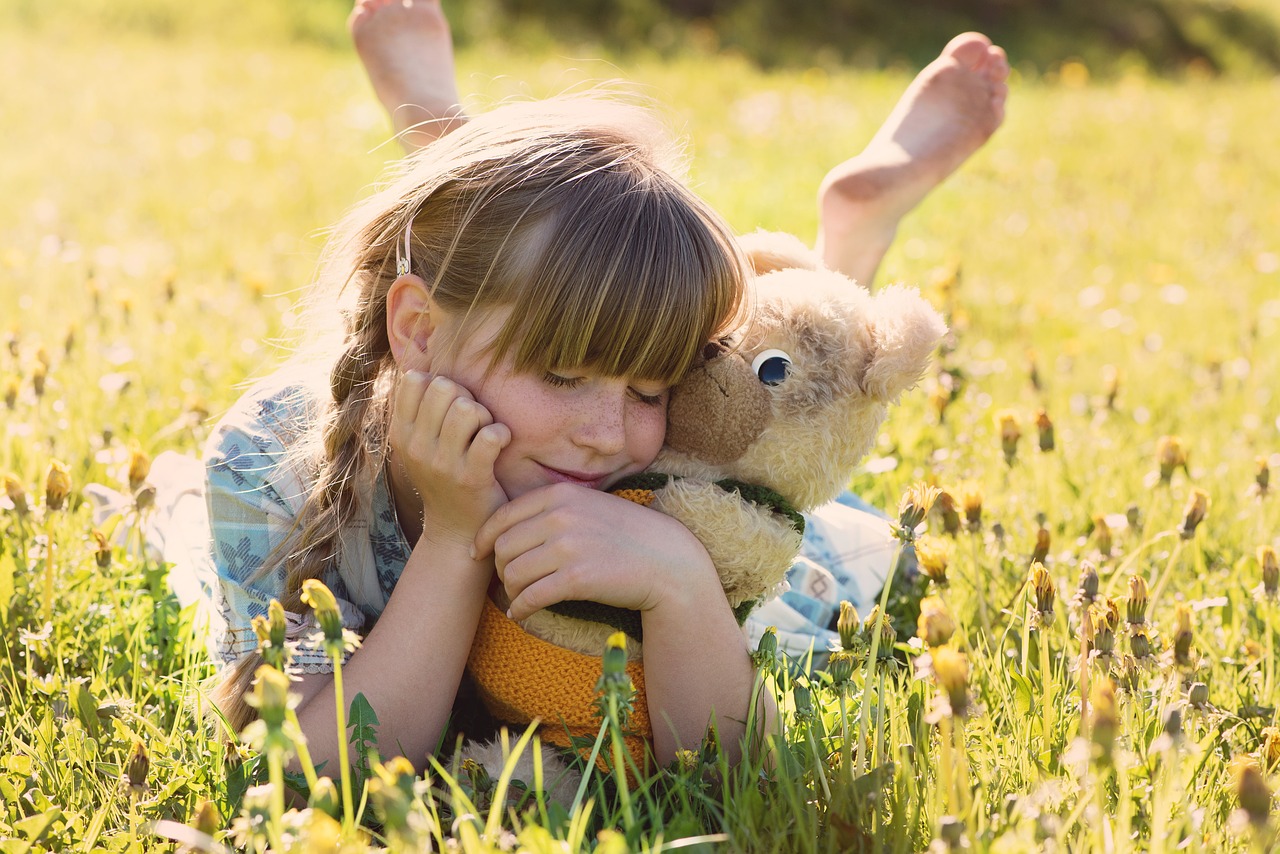
DIY Gifts
Creating handmade gifts is not just a fun activity; it's a heartfelt way for kids to express their feelings and strengthen their emotional connections with family and friends. Imagine the joy on a loved one's face when they receive a unique gift crafted with care and creativity! DIY gifts allow children to tap into their imagination and showcase their personal touch, making each present truly one-of-a-kind.
One of the beautiful aspects of DIY gifts is that they can be tailored to suit any occasion. Whether it's a birthday, holiday, or just a simple "I love you," the possibilities are endless. Kids can create personalized items that reflect the recipient's interests, which adds a special layer of thoughtfulness. For instance, they could design a custom photo frame decorated with colorful paints and stickers, or perhaps craft a unique bookmark for the bookworm in the family.
Here are a few delightful DIY gift ideas that kids can easily tackle:
- Handmade Cards: A simple yet meaningful way to convey messages of love and appreciation. Kids can use colored paper, markers, and stickers to create cards that are as unique as they are.
- Friendship Bracelets: With just a few strands of yarn or embroidery floss, children can weave beautiful bracelets for their friends, symbolizing their bond.
- Custom Mugs: Using special ceramic markers, kids can decorate plain mugs, transforming them into personalized treasures for family members.
Not only do these projects foster creativity, but they also teach valuable skills such as planning, patience, and the joy of giving. Plus, engaging in DIY gift-making can be a wonderful bonding experience between parents and children. Imagine sitting together at the kitchen table, surrounded by craft supplies, laughter, and the aroma of fresh cookies baking in the oven, all while creating something special!
As an added bonus, DIY gifts often come with a story. Each creation has a unique background, filled with memories of the crafting process. When presenting the gift, kids can share the story behind it, making the experience even more meaningful. This not only enhances the value of the gift but also encourages children to communicate their thoughts and feelings effectively.
In conclusion, DIY gifts are a fantastic way for kids to explore their creativity while learning about the importance of giving. So, gather those craft supplies, unleash the imagination, and watch as children create heartfelt treasures that will be cherished for years to come!
Q: What materials do I need for DIY gifts?
A: The materials can vary based on the project, but common supplies include paper, markers, glue, yarn, and any decorative items you can find around the house.
Q: Are DIY gifts suitable for all age groups?
A: Absolutely! There are DIY projects suitable for toddlers, school-aged children, and even teens, allowing everyone to participate in the fun of crafting gifts.
Q: How can I encourage my child to be creative while making gifts?
A: Provide them with a variety of materials and let them explore their ideas freely. Encourage them to think outside the box and to make the gift personal for the recipient.
Frequently Asked Questions
- What are some benefits of crafting for kids?
Crafting offers a multitude of benefits for children. It helps improve fine motor skills, enhances creativity, and boosts self-esteem. Engaging in hands-on activities allows kids to express themselves while developing critical thinking and problem-solving skills.
- What are some easy crafts suitable for toddlers?
Toddlers thrive on simple, hands-on activities. Some great craft ideas include leaf prints, where kids use leaves and paint to create unique artworks, and rock painting, which allows them to transform ordinary rocks into colorful masterpieces. These activities are safe and encourage exploration.
- How can nature-inspired crafts benefit children?
Nature-inspired crafts help children connect with the environment while expressing their creativity. By using natural materials, kids learn to appreciate the beauty of the outdoors. Crafts like leaf prints and rock painting not only enhance artistic skills but also foster a sense of environmental stewardship.
- What are some seasonal craft ideas for kids?
Seasonal crafts are a fun way to celebrate different times of the year. Projects can include making holiday decorations, creating seasonal cards, or crafting gifts that align with various celebrations. These activities keep kids engaged and excited about the changing seasons.
- What types of crafts are suitable for school-aged children?
As children grow, their crafting skills evolve. School-aged kids can enjoy a variety of projects, such as recycled materials crafts that promote sustainability, or DIY gifts that allow them to express their feelings for family and friends. These projects encourage creativity and critical thinking.
- How can recycled materials be used in crafting?
Recycled materials are fantastic for fostering creativity and teaching sustainability. Kids can use items like cardboard boxes, plastic bottles, and old newspapers to create innovative crafts. This not only sparks their imagination but also instills valuable lessons about reusing and recycling.
- What are some DIY gift ideas for kids to make?
Creating DIY gifts is a wonderful way for kids to express their love for family and friends. Ideas include handmade cards, painted picture frames, or even custom jewelry. These heartfelt creations enhance emotional connections and allow children to share their creativity with others.



















